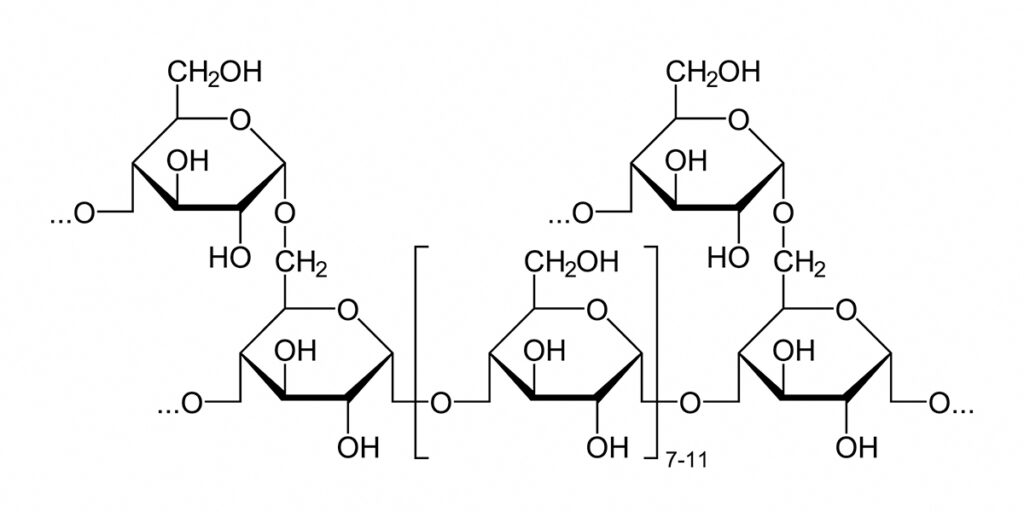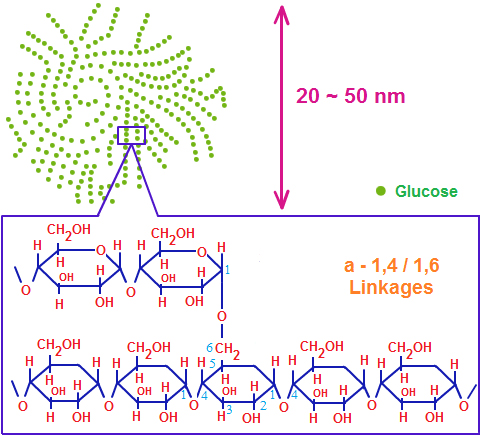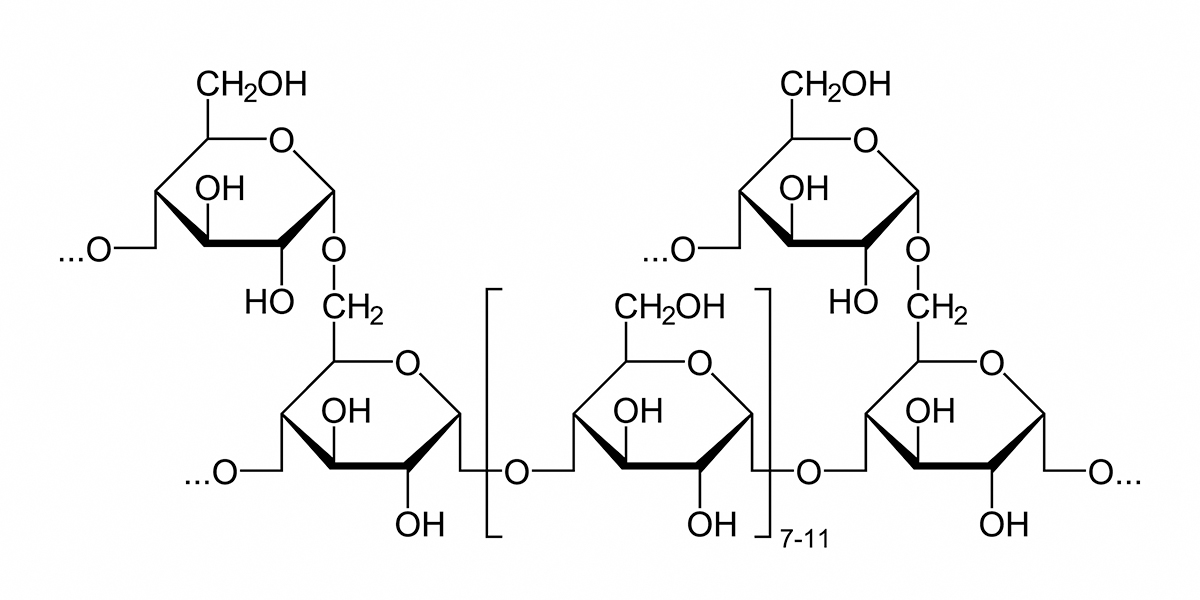Blog
Polysaccharide Storage Myopathy type 1 (PSSM1)

Polysaccharide Storage Myopathy type 1 (PSSM1) is a disease state in horses caused by an inherited defect in glycogen metabolism. Polysaccharide Storage Myopathy type 1 (PSSM1) is a form of exercise intolerance. Horses with Polysaccharide Storage Myopathy type 1 (PSSM1) exhibit exercise-induced symptoms including reluctance to move, pain, stiffness, tremors, and profuse sweating. Serum creatine kinase (CK) and aspartate aminotransferase (AST) are elevated, indicating muscle damage. In severe episodes, myoglobinuria (coffee-colored urine due to the presence of myoglobin), inability to stand, and death can occur.
Glycogen is a complex polymer of glucose that serves as a store of glucose in liver and skeletal muscle. As shown in the image below, a glycogen granule consists of multiple branched chains of glucose units. Most of the glucose units are joined by a-1,4 linkages, with a-1,6 linkages at the branch points. The synthesis and breakdown of glycogen are controlled by different enzymes. Glycogen synthase and the branching enzyme synthesize glycogen, while glycogen phosphorylase and the debranching enzyme break it down. Glycogen synthesis and breakdown is regulated in response to energy needs and the availability of glucose.

Muscle biopsy of horses with PSSM1 reveals the presence of enlarged glycogen granules that are amylase-resistant. During maximal exercise, horses with PSSM1 utilize muscle glycogen and produce lactic acid, indicating that the glycolytic pathway is unimpaired [1]. Therefore, the presence of enlarged, amylase-resistant glycogen granules reflects increased glycogen synthesis rather than decreased glycogen utilization [1].
PSSM1 is common in Quarter Horses. This made it possible to search for genetic variants associated with PSSM1 by genome-wide association. A region on ECA10 was associated with PSSM1; of the candidate genes in this region, only GYS1, the gene encoding glycogen synthase, was known to have a role in carbohydrate metabolism. DNA sequencing of GYS1 from affected horses revealed a missense allele of GYS1 associated with PSSM1 [2].
The missense allele of GYS1 associated with PSSM1 is designated GYS1-R309H, meaning that the amino acid in the 309th position of the protein, which is ordinarily an arginine (R), is replaced by a histidine (H). This change results in the constitutive activation of glycogen synthase [3], shifting the equilibrium of glycogen synthesis/breakdown in the direction of synthesis.
Some Quarter Horses with symptoms of exercise intolerance do not carry the GYS1-R309H allele. Muscle biopsies from these horses do not show enlarged, amylase-resistant glycogen granules, although they exhibit other abnormalities. There is no evidence for a disorder of carbohydrate metabolism in these horses. Nevertheless, horses with symptoms of exercise intolerance that lack the GYS1-R309H allele are diagnosed with Polysaccharide Storage Myopathy type 2 (PSSM2). The genetic basis of PSSM2 is under investigation.
Citations
[1] Valberg, SJ (1999). “Skeletal muscle metabolic response to exercise in horses with ‘tying-up’ due to polysaccharide storage myopathy.” Equine Vet J. 31(1):43-47. PMID: 9952328.
[2] McCue, ME et al. (2008). “Glycogen synthase (GYS1) mutation causes a novel skeletal muscle glycogenosis.” Genomics. 91(5):458-66. PMID: 18358695.
[3] Maile, CA et al. (2017). “A highly prevalent equine glycogen storage disease is explained by constitutive activation of a mutant glycogen synthase.” Biochim Biophys Acta Gen Subj. 1861(1 Pt A):3388-3398. PMID: 27592162.
[4] McCue, ME et al. (2009). “Comparative skeletal muscle histopathologic and ultrastructural features in two forms of polysaccharide storage myopathy in horses.” Vet Pathol. 46(6):1281-1291. PMID: 19605906.
Share this post
From the blog
The latest industry news, interviews, technologies, and resources.
